KAYA
Kerstin Brätsch & Debo Eilers
KAYAHÖLLEKÖLLE
September 2023
Performance Documentation KAYA & VIOLENCE
Performance Video
Exhibition Views
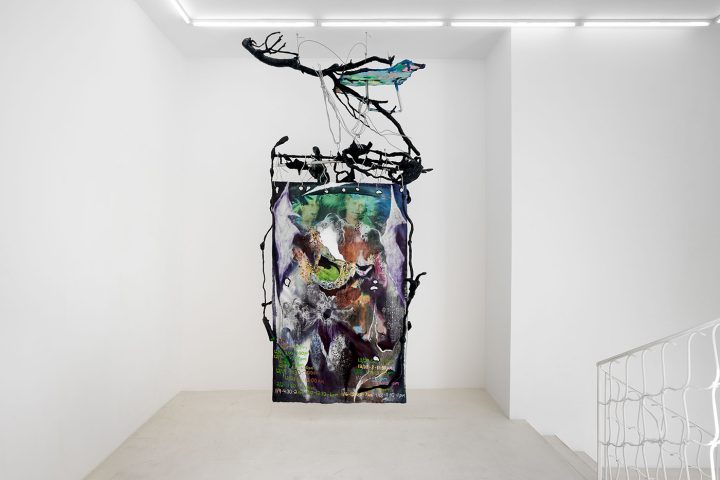
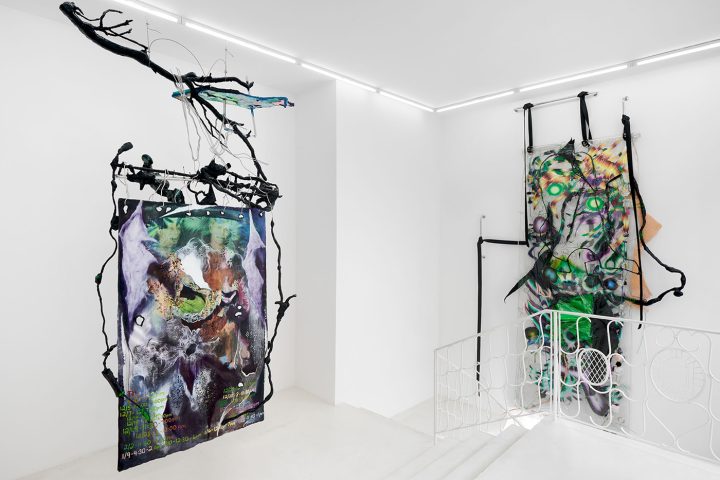












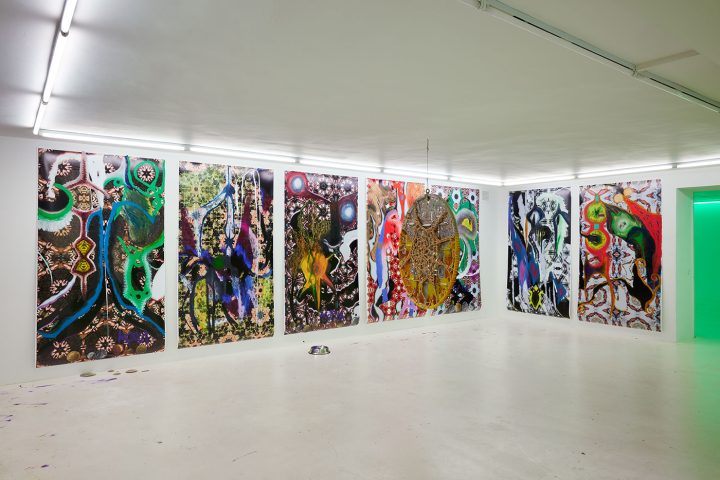
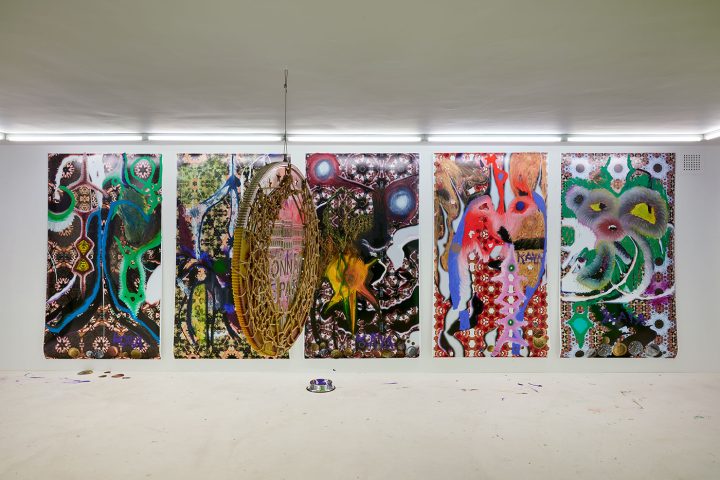

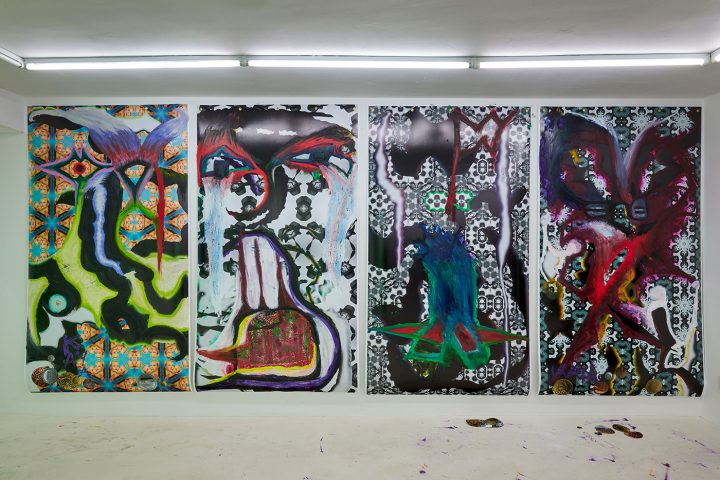







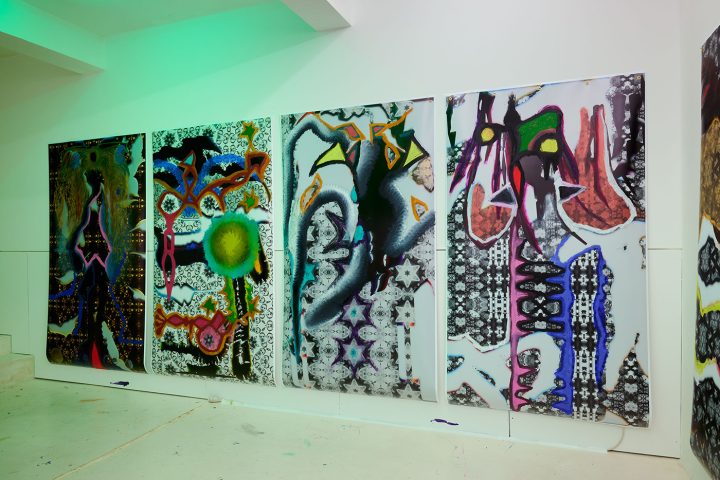


In 2013 I was interning at a gallery downtown. It was my introduction to the contemporary art world, outside of the college art history classes which I found difficult to understand. That summer is blurry in my memory and was unhinged upon revisiting my journal from that time, marked with friendship turmoil, a night spent in jail from which I went straight to work after hurriedly re-lacing my shoes outside the precinct, errant cringey hookups, and falling asleep at my job in the library. But here at the gallery, I wanted to be professional, or at least learn what that meant.
We were preparing for a show by a collective called KAYA. I was unclear on what a collective was. The gallerists informed me that a teenage girl named Kaya would soon arrive, and that I should hang out with her because she was close in age to me. I wasn’t sure what to talk about with her, but made my best effort. The other two artists, Kerstin Brätsch and Debo Eilers, I did not speak to much at all. Hanging throughout the gallery from thick black belts strapped to metal grab bars were transparent plastic sheets with gradient colored brush strokes pushed across their surfaces. A black metal staircase covered in silver sharpie scrawls spiraled into the ceiling to form a column in the middle of the gallery. It reminded me of my high school boyfriend. I had the feeling that the marks were Kaya’s.
I had been working for Kerstin for a little bit over a year when KAYA had their show at 47 Canal. A weird confluence of relationships cohered in the project as I had done a performance at 179 Canal, the precursor to 47 Canal, a few years prior with my own collaborative group. Confusing and adding onto the many personalities that KAYA worked through in the exhibition, a drag performance by me was proposed to activate the space; my stage was to be a spiral staircase that wound into the ceiling leading to nothing. An in-between space that made no sense.
I was tasked by Margaret, one of the gallerists, to run out to buy a pair of biker shorts because she would be part of that evening’s performance which involved throwing dice on the floor, and didn’t want to flash people in her dress. The performance involved gambling. I was unclear on what “performance” meant. When I returned, piles of large medieval looking golden coins sat alongside the ingredients for Aperol Spritz and pitchers of spiked gazpacho that Margaret had made, which I was to bartend that evening. I was curious about what either of these drinks were.
At the time I was obsessed with a certain television show that was beginning to popularize drag performance in American culture. I had always worn women’s clothing starting in high school, but that mostly extended to pants and shirts that didn’t reach fully into dresses. I knew my slender frame would look amazing in a specific floor length black silk chiffon slip dress that my friend owned and I partially took on the performance so I could wear it. In the end, I wasn’t great at performing or lip syching as I was inexperienced, but Kerstin and Debo liked my nervous energy that made people uncomfortable as they watched me.
This summer 2023, ten years later, I bartended for the second time in my life, again for KAYA and Margaret. Daniel and I had become friends some time after KAYA’s performance, and formally began working together in 2020 as part of a four person collective called CFGNY alongside Kirsten Kilponen and Tin Nguyen. CFGNY curated KAYA and Margaret into a two person show together in NYC. Through this action a time loop was made. Or, maybe I only became aware of a continuous luminance that had flowed along the passing years, like a comet’s trail re-emerging along its wandering path. Informally, we referred to it as our “mentors show.”
The gambling took place in the back room over a tiled sculpture with gooey rainbow grout. Someone may have been crawling around inside of it, but I couldn’t tell because I was serving drinks. At this point the gallery had become very loud. Everyone was trying to win one of the plastic paintings strapped with bondage belts. I was instructed to only give drinks to those who offered me a gold coin in exchange, but one man kept pestering me for free drinks. Combative due to the chaos of my personal life that summer, I yelled at him, and he slunk off. Someone informed me that he was an important collector. Ten years ago, I didn’t know or care what “collector” meant. I had drunk a lot of gazpacho. Someone won the artwork.
Watching KAYA work through its many forms, the visceral relationships that it cultivated through its practice, helped me think through the body in relation to art. How can art not only refer to the body, but actively inform the work through its presence as a messy and uncontrollable force that brings art away from a preciousness and allows it to leak out into the world. How this leakage bleeds out more beautifully when more and more voices contribute to something that resembles a collective.
When you add more and more people into dialogue, or even into a room together, the edges of an individual’s narrative get wobblier and the opportunities for leakage multiply. An attempt can be made at giving shape to an amalgamated form by guiding it with restrictions: a bear confined to a shower, a message inscribed within a poster, gambling probabilities, distorted vocalizations; the ever-present force of the market around which generative energy spurts out. When a critical mass is reached, what initially begins as an individual’s process of translation becomes the polyphonic transmission of a new language.
Ten Azu and Daniel Chew, August 2023
